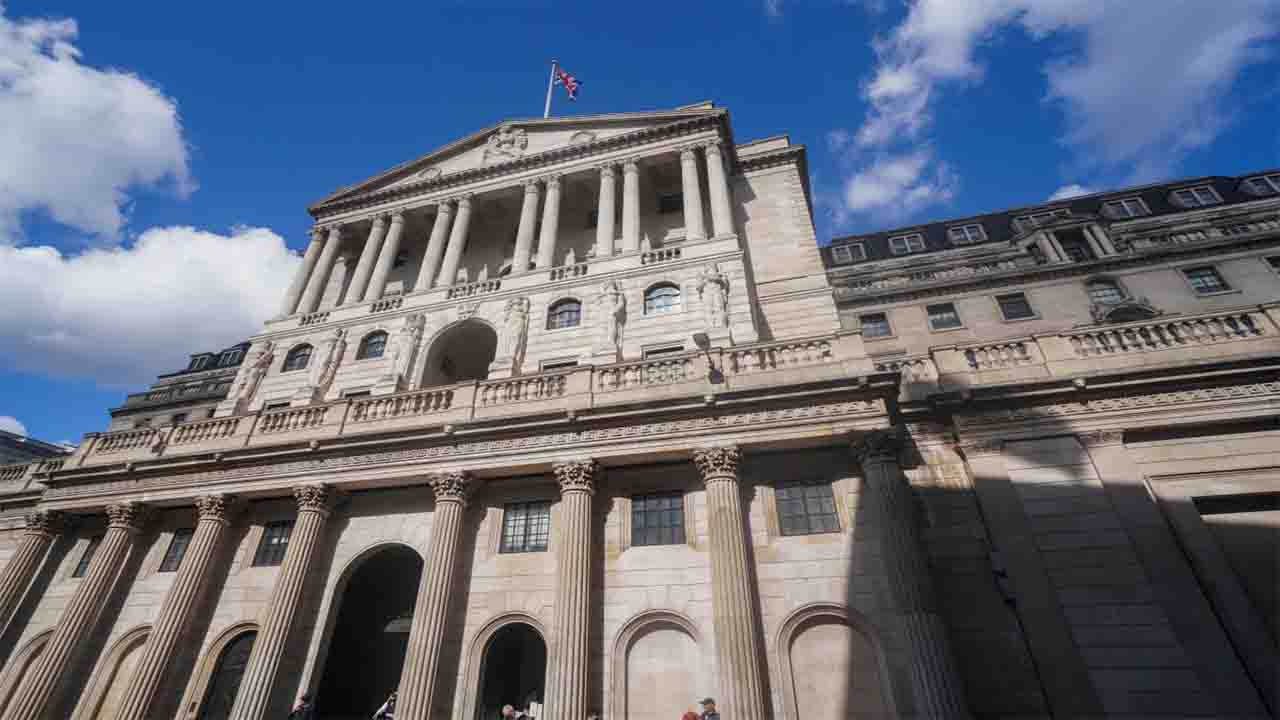UK (Commonwealth) _ The Bank of England’s (BoE) monetary policy committee (MPC) has maintained interest rates at 5.25%. Six members decided to keep rates at their present level, while two wanted to raise the Bank rate by 0.25 percentage points to 5.5% and one wanted to lower it by 25 basis points to 5%.
The MPC has opted to maintain rates for the fourth time in a row, dating back to September 2023. The committee’s decision was consistent with that of the Federal Reserve and the European Central Bank, both of which voted to keep interest rates unchanged at their January meetings.
In December, UK inflation increased to 4% from 3.9% in November, above the BoE’s objective of 2%, prompting a pause in the rise cycle. The MPC predicts that inflation will fall to its goal in the spring, “before slightly increasing again”.
The committee stated that we would keep interest rates high long enough to bring inflation back to the 2% objective. Inflation is predicted to fall below 2% and remain there beginning in the fourth quarter of 2025, with the Bank of England estimating a rate drop from 5.25% to about 3.25% by Q1 2027, the conclusion of its projection period.
It also stated that the MPC is still willing to alter monetary policy as needed based on economic data in order to sustainably restore inflation to the 2% objective. It will thus continue to closely watch indicators of ongoing inflationary pressures and resilience in the economy as a whole, including a variety of measures of underlying labor market tightness, wage growth, and service price inflation. On that basis, the committee will consider how long the bank rate should remain at its current level.
Reaction
Lane Clark & Peacock (LCP) said the BoE’s decision was not surprising, adding that the bank would not be able to decrease rates in the near future.
LCP partner Paul Gibney stated, “Although we may see inflation fall below the bank’s 2% target in the coming months, as 2023’s early year sharp price increases fade, wage growth, which has an important effect on labor intensive service price inflation, stays well above a level consistent with 2% inflation.”
It is, however, moving in the right direction – at least for policymakers – with newly released numbers showing earnings growth falling to 6.6% in the three months to November 2023, much below the summer peak of 8.5%. A continuation of this pattern, given a dismal economic background, will boost the bank’s capacity to decrease interest rates, but not in the near future.
According to April LaRusse, head of investment experts at Insight Investment, the MPC faced a difficult balancing act today, needing to shift toward future rate decreases while keeping a sufficiently hawkish posture to keep market enthusiasm under control.
Overall, we believe they performed a terrific job. References to more tightening were deleted, but it was stated that more favorable inflation data would be required before the relaxation cycle could begin. To emphasize the point, two members of the MPC voted for a further increase, while just one voted to ease. We continue to believe the bank will be more cautious than markets anticipate, and that the rate of easing will be slower than elsewhere.
Chris Arcari, head of capital markets at Hymans Robertson, confirmed the bank was being careful, but said that further falls in headline inflation could allow the major central banks to begin lowering interest rates in the second half of 2024.
He explained that the bank has not decreased interest rates this month because it is cautious, with lingering worries about some aspects of domestically generated inflation. However, it acknowledges the robust progress on inflation, which has been mostly driven by supply-side factors, and agrees with mainstream estimates that headline CPI inflation will drop below the 2% target by or around the summer. And this occurs at a time when UK real growth, both realized and expected, is relatively low.
The Bank of England kept interest rates at 5.25% for the fourth time consecutively, although decreases are expected later this year. Interest rates are adjusted up and down to regulate UK inflation, which has fallen dramatically in recent months, alleviating cost-of-living pressures.
However, the UK economy has stagnated due to higher borrowing rates and other factors. The Bank of England’s interest rates effect mortgage, credit card, and savings rates for millions of individuals in the UK.
Why interest rates get varied?
The Bank of England’s base rate, which is now 5.25%, is the amount it charges other lenders to borrow money. This has an impact on how much other banks charge their clients for loans like mortgages, as well as the interest rate they pay on savings.
The Bank’s Monetary Policy Committee gathers eight times a year to determine the appropriate base rate. It aims to keep UK inflation at 2%. Inflation refers to the overall rate of price increase in the economy.
When inflation rises, the Bank may boost interest rates to encourage consumers to spend less. The assumption is that this reduces inflation by lowering demand. Once this occurs, the Bank may decide to hold or lower interest rates.








